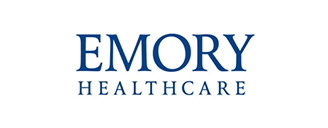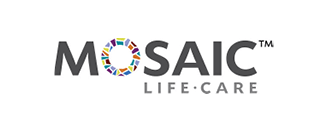Using Technology to Create a Clinically Integrated Supply Chain
This past March, Maria Hayes, an established corporate account consultant in the healthcare industry and VPL’s Chief Strategy & Product Officer Derrek Seif joined Scott Tomko from Healthcare Purchasing News to discuss how hospital supply chain leaders can optimize the critical clinical areas of their hospitals by focusing on innovative technologies that optimize revenue-generating areas, such as elective surgery and specialty pharmacy.
Below is an edited transcript of their conversation, with Scott’s questions taking the form of headlines.
WHAT DOES IT MEAN TO HAVE A CLINICALLY INTEGRATED SUPPLY CHAIN FROM A LOGISTICS STANDPOINT?
Maria: When I hear “clinically integrated supply chain,” to me, it means an enterprise or system resource planning approach to supply chain management. The approach will incorporate clinical input into what types of products and utilization are needed for better patient outcomes, which ultimately comes down to what supplies and suppliers are being used.
It also manages all the distribution and logistics activities through a centralized, standardized system as opposed to multiple processes within the organization. In essence, it’s able to translate clinical speak into supply chain speak, and I think Covid really put a spotlight on the importance of this process. A great example was finding reliable substitutions when a primary product wasn’t available. That clinically integrated process was key to determining and validating whether a tier-two, tier-three, or later-tier substitution would require additional accessories, staff training, or allocations that need to be considered to get the product to [the point of] patient care. Also, logistically, [we’d want] the ability to know when a product would be received if shipping delays or OEM back orders needed to be communicated to the clinical team so that patient procedures and care would not be impacted.
Derrek: We think about clinically integrated supply chains [moving] in two directions: Products shipped inbound from suppliers into the hospital, and products shipped outbound from the hospital to clinics, other hospitals, and more importantly, patients’ homes. Clinically integrated supply chains, for us, means focusing on logistics challenges on a per-clinical-area basis. And in today’s environment, prioritizing those clinical areas that are revenue-generating areas of the hospital.
Let me zoom in for a minute on how a clinically integrated supply chain for products coming into the hospital is so important. The overarching goal of the supply chain is to ensure critical products get to the patient. So analyzing the logistics data by clinical area can help inform category management value analysis initiatives that are ongoing in the hospital AND coordinating between supply chain and clinical administration, as Maria pointed out. An example of some of the logistics metrics for these initiatives can be order lead times by supplier, by supplier location. These can be early indicators of back order issues, and metrics around carrier on-time performance can have an impact on products that are needed for a real critical procedure. Integrating all these inbound logistics and metrics for each clinical area allows the health system to make broader logistics decisions for each of their clinical areas, in one central place.
WHICH CLINICAL AREAS HAVE THE BIGGEST SUPPLY CHAIN CHALLENGES THAT NEED TO BE SOLVED, AND WHY?
Derek: Any clinical area that has the responsibility of getting products to patients’ homes has the biggest challenges due to the lack of control once [the product] leaves the hospital. Today, the most unique and pressing challenges are in Specialty Pharmacy as they’re [the ones] delivering medications to patients. These challenges are high stakes and need to balance logistics decisions, taking into account variables such as the value of the product, the temperature of the product, and the time to deliver. Our goal has been to remove that decision-making process from the pharmacist and technicians so that they can focus more on patient care. But doing this is a delicate balance [between] logistics cost and ensuring patients receive their medications, and—on top of that—making sure the health system gets reimbursed for those drugs so they can continue to serve more patients. As the care-at-home trend continues, the logistics challenges that we have today in specialty pharmacy are only going to be exacerbated in other clinical areas.
Maria: I think pharmacy is a great example. Another area I think most providers would agree [has challenges] is the Operating Room. It’s definitely the biggest consumer of supplies and therefore very challenging. And it’s an area that generates huge amounts of revenue, but also has high demand regarding product availability and reliability. Those complexity of procedures and demographics vary from facility to facility, regarding not just the types of procedures being done, but the variation of HOW those procedures are being tackled by the OR staff make the OR a big ticket on supply chain both cost and time. OR would probably be followed by other procedural units like endoscopy, cath lab, and interventional radiology. When you’re looking at what’s happened over the years—where you’ve had a decline in some of those elective procedures—cost and consistency have become more important. Standardization is a key area and providers are really focusing on reducing SKUs in cost.
Clinical input in these areas is needed to help identify best practices and usable substitutes. A good example that I [often refer to] is in the ortho-spine space or any space that’s just one area of surgery. It’s not unlikely to have 30-plus different suppliers in the facility. Trying to get to even 15 [suppliers] is a challenge for more systems, but they’re striving for a more predictive supply chain to ensure complex critical care procedures can be done on time with the best outcomes and more predictive cost and supply availability.
AS HOSPITAL CARE MOVES FROM ACUTE INTO CLINICS, OTHER REMOTE HOSPITALS, AND THE HOME, WHAT IMPACT DOES IT HAVE ON SUPPLY CHAIN LOGISTICS AND WHAT DO HEALTH SYSTEMS NEED TO START THINKING ABOUT TO ANSWER THAT QUESTION?
Maria: Most systems have, historically, not done well managing supplies outside the four walls of the acute-care facility due to the number of delivery points that lower unit of measure and the relatively lower acuity of supplies. Most of the enterprise systems have a decent view into some of their owned and managed centers, like their surgery centers and standalone ERs or large moobs. And whether they’re self-distributing or not, they’re usually partnering with a non-acute distributor that is set up for that. But even when using a distributor partner, the cost is [often] cost+15% or greater to get to these non-acute facilities. Systems are looking at ways to lock down the “Wishlist Catalog” they get from their non-acute distributor and [to] standardize products across facilities and even across the system to manage SKUs in cost. Non-acute data systems are, commonly, not speaking the same language as a mothership. So, you’ll see disparate data systems [between] the acute care [and] the non-acute. Clean, usable data and processes [used] to make decisions around the supply chain are going to continue to be an area that needs improvement.
Derrek: We’re really paying close attention to this home healthcare trend. The study I just read said the supply chain is about 16% of the total cost of a $90-billion home healthcare market, and that’s a significant dollar amount that’s due to complexity and fragmentation. There are multiple clinical workflows that complicate the issue due to the mix of products needed to serve chronic disease states. We talked a little bit about specialty drugs, but they can also include pre- and post-operative kits, therapeutics, diagnostics, and, certainly, the mobility-assist equipment that has to get to the home—all of which make things more complex. As far as guidance, I think being proactive is always better. The sooner health systems start thinking about different strategies and helping to manage these complexities, especially as they relate to logistics, they have a better chance of making sure they don’t lose connection with that patient, [which helps] avoid the readmission to the hospital. Getting started obviously is the hardest part but evaluating each clinical category and ensuring it has the ideal mix of logistics services is key because sometimes it’s carrier and sometimes it’s courier. There has to be coordination among different clinical areas within the hospital to get to one destination point, be open to change over time, use data that can identify where certain logistics failures are happening or where successes are happening, and be willing and able to change at a moment’s notice and mix up those different service levels for logistics.
WHAT DO WE SEE AS THE HEALTHCARE MARKET CHALLENGES THAT PREVENT THIS NIRVANA VISIBILITY AND RESILIENCY FOR CRITICAL CLINICAL SUPPLY CHAINS?
Derrek: This is one of my favorite topics. There are a lot of consortiums and conferences that talk a lot about these problems and supply chain visibility and resiliency. In fact, I recently participated in a roundtable discussion at a visibility conference and asked the question to a table full of manufacturers, distributors, service providers, and the government and asked, “How do you define visibility and resiliency problem?” The answers from each of those stakeholders were different. Which brings me to challenge number one: problem definition. Each stakeholder defines the visibility and resiliency problem differently. It feels as if each stakeholder is trying to solve a different problem. The next two challenges are two challenges that Maria hit upon around data standardization and data privacy. The data standardization challenge is that required, shared data is fragmented and often found in different systems, different ERPs, etc., and is not as accurate and consistent as it needs to be for actionable results. On the data privacy side, the sensitivity of the data for each stakeholder is a real thing, especially as it relates to the data that’s directly related to competitive advantages, but it prevents data-sharing agreements to be put in place. Lots of focus needs to be put on that challenge as well as the other two.
Maria: I think, historically, stakeholders in healthcare from the manufacturer’s supplier to distributor to the end user, to the actual utilization of the product, haven’t been great partners and certainly haven’t been very transparent. A lot of the resiliency of our supply chain is dependent on that solid data, and we don’t have standard nomenclature or codes for our product descriptions. Data cleansing and standardization on UPC is something we’ve been talking about in trade shows and trying to solve as an industry for 20 years, and we still have not been able to normalize data. Other industries like auto, grocery, and airlines have done it, and I’m hopeful that Covid will help us become a bit more transparent and collaborative before it’s decided for us through regulation. I realize that healthcare is a different animal and that making a mistake in supply chain can cost a life and not just a canceled flight or delay in a new-car delivery, but we definitely need to improve.
WHAT NEEDS TO BE TRUE FOR NIRVANA TO HAPPEN?
Maria: Healthcare, in general, is more complex: the end product is patient safety and health. So, there’s always an exception and it’s difficult to standardize to a specific playbook, but something has to happen to get us closer to this Nirvana because we can’t continue at the pace we’re [going]. We simply can’t afford it the way it exists today. One of my favorite statistics is that the US represents 4% of the worldwide population, but accounts for 40% of the global health community economy. So, we need to find a better way to translate that into better outcomes and affordable care. From a supply chain perspective, that means more predictive and resilient ones, so we’re more prepared for the next pandemic or natural disaster. Making decisions around data that is usable is the key, and the way to get to that data is through collaboration, transparency, and true partnerships leveraged by the technology that will help us do it more efficiently and accurately.
Derrek: Data is key in my answer, which will really resonate with anyone who has a scientific background because I look at this from a scientific methodology standpoint. We want to take data, understand—understand and agree on—the problem we need to solve first with a couple of innovative stakeholders, whether they’re the manufacturers, the government, the providers, etc., to really prove a solution. And we want to focus on a problem where there’s accurate and consistent data over which of those stakeholders have 100% percent control. What that might mean is that we’re solving the problem for a very specific product line or critical clinical area, and then leveraging technology on top of that to be able to prove it. Once we can prove that, we can scale to more vendors and health systems. And the last thing that I will say is that we always need to make sure that, when we’re developing solutions, we keep the patient in mind because the patient is the most important.






























